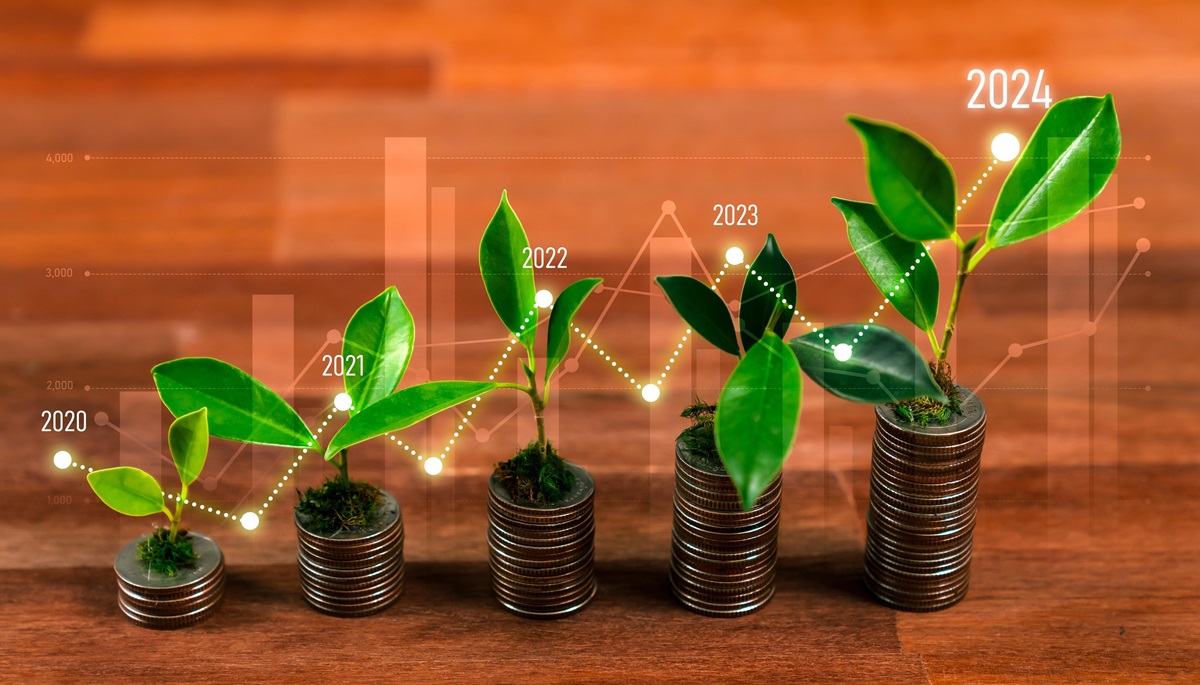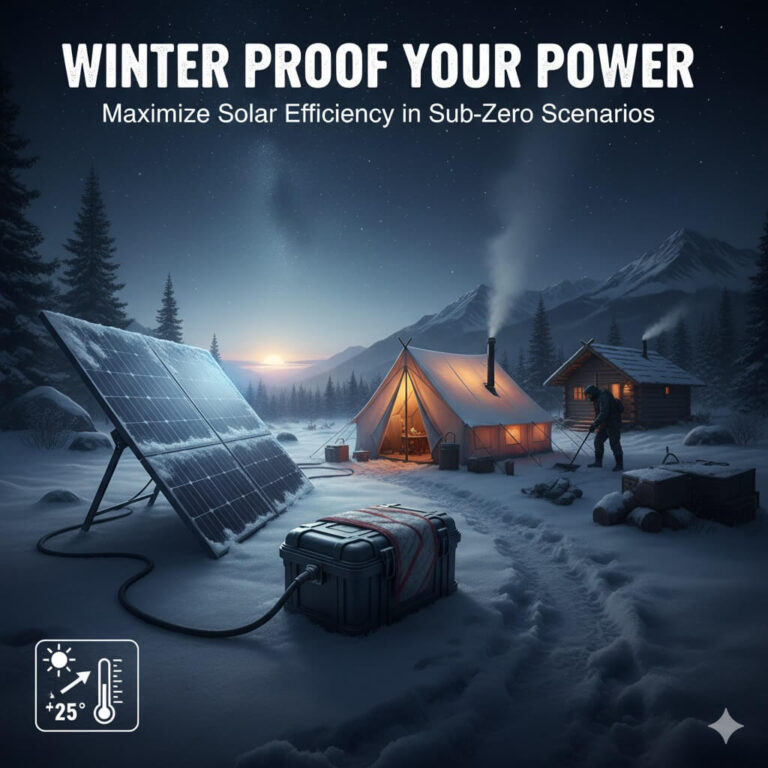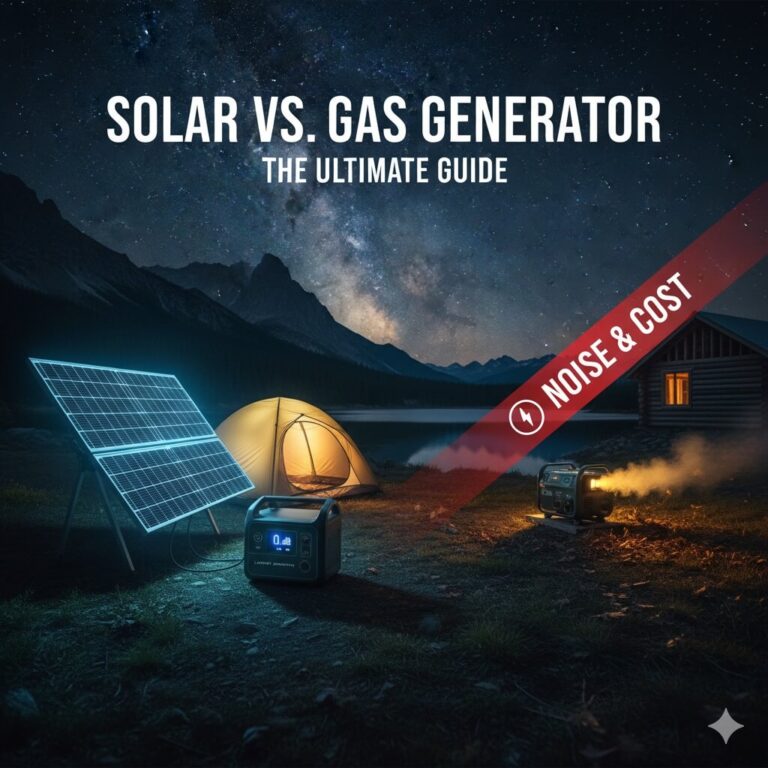How to Start a Renewable Energy Portfolio With Just $500: Your Beginner’s Guide💰

The clean energy revolution is one of the most significant investment opportunities of our time. You might think you need thousands of dollars to get started, but that’s a common misconception. You can make an impact with your money and begin investing in a sustainable future with as little as $500. This guide will show you exactly how to build a diversified renewable energy portfolio, breaking down the best strategies—from low-cost ETFs to fractional shares—that put you in the driver’s seat of your financial future.
- Why Now Is the Time to Invest in Green Energy
- The Easiest Way to Start: Investing in Renewable Energy ETFs
- For Targeted Growth: How to Use Fractional Shares
- Your Step-by-Step Action Plan: Building a $500 Portfolio
- FAQs for Your First Green Investment
- Conclusion: Powering Your Future, One Investment at a Time
Why Now Is the Time to Invest in Green Energy
The shift toward a sustainable economy is not just a passing trend; it’s an irreversible, multi-decade transformation that is reshaping the global economy. This makes investing in clean energy one of the most compelling long-term strategies for any beginner.
Here’s why now is the perfect time to start:
- Strong Growth Drivers: Governments worldwide are pushing ambitious policies, including tax credits and subsidies, to accelerate the adoption of clean energy. This, coupled with massive corporate investment in decarbonization, creates a powerful tailwind for the entire sector.
- A Global Macro-Trend: The IEA’s World Energy Investment 2025 report highlights this shift, showing that clean energy investment is significantly outpacing spending on fossil fuels. This data provides a strong, credible reason for a beginner to enter the market, knowing they are aligning with a global macro-trend.
- Falling Technology Costs: The cost of solar panels, wind turbines, and battery storage has fallen dramatically over the past decade, making them more competitive than ever before. This drives adoption and increases the profitability of renewable energy projects.
By starting now, even with a small amount of capital, you can begin to participate in this revolution, growing your wealth while contributing to a more sustainable world.
The Easiest Way to Start: Investing in Renewable Energy ETFs
When you have a small budget, diversification is your best friend. Buying just a few individual stocks can be risky, as a poor performance from one company can sink your entire portfolio. This is where renewable energy ETFs become an incredibly powerful tool.
An ETF (Exchange-Traded Fund) is a basket of stocks that you can buy and sell like a single stock. By purchasing one share of an ETF, you gain instant ownership in dozens or even hundreds of companies across the clean energy sector, providing a level of diversification that would be impossible to achieve with just $500 on your own.
Also: Best Renewable Energy Investment Funds & ETFs for 2025
Here are the top low-cost ETFs for beginners:
- iShares Global Clean Energy ETF (ICLN): This is the gold standard for broad, global diversification. With a large AUM of over $1.47 billion, ICLN tracks the S&P Global Clean Energy Index, giving you exposure to a wide range of companies involved in solar, wind, and hydroelectric power. Its low expense ratio of 0.41% makes it a highly cost-effective choice for a core portfolio holding.
- First Trust NASDAQ Clean Edge Green Energy Index Fund (QCLN): For those who want a wider view of the clean tech world, QCLN is a great option. It offers exposure to the broader clean energy ecosystem, including companies involved in electric vehicles, advanced batteries, and smart grid technology. With an expense ratio of 0.56%, it’s a solid choice for investors who want to capture growth beyond just power generation.
- Invesco Solar ETF (TAN): If you’re particularly bullish on solar, TAN is a pure-play option. It focuses exclusively on the solar energy value chain and offers concentrated exposure to top solar companies. While its higher expense ratio and volatility make it a riskier choice for a beginner’s core holding, it can be a valuable addition for a more growth-focused portion of your portfolio.
Actionable Advice: To begin your portfolio, we recommend allocating the majority of your $500 budget (e.g., $350-$400) into one of these ETFs, preferably a diversified one like ICLN, to create a strong, stable foundation.
For Targeted Growth: How to Use Fractional Shares
Now that you have your diversified foundation, what do you do with the remaining $100-$150? This is where fractional shares come in.
Historically, buying a single stock from a high-priced company was impossible with a small budget. Fractional shares have changed that. They allow you to buy a small fraction of a single stock, making expensive companies accessible with as little as $1.
Here’s how to use fractional shares for targeted growth:
- Choose a Brokerage: You’ll need a brokerage account that offers fractional shares and has low or no commissions. Beginner-friendly platforms like Fidelity (with its $1 minimum “Stocks by the Slice” feature) and Charles Schwab (with a $5 minimum for “Schwab Stock Slices”) are excellent choices.
- Select High-Performing Stocks: Use your remaining funds to buy fractional shares of a few individual renewable energy companies to add a bit of targeted exposure. You could consider buying a piece of companies that are leading the market, such as First Solar (FSLR), Enphase Energy (ENPH), or NextEra Energy (NEE).
This strategy allows you to build a personalized portfolio with the stability of a diversified ETF and the growth potential of a few carefully chosen individual stocks, all with a budget of just $500.
Your Step-by-Step Action Plan: Building a $500 Portfolio
Ready to get started? Follow this simple, numbered guide to build your first renewable energy portfolio today.
- Choose a Brokerage: Select a beginner-friendly platform (like Fidelity, Schwab, or Robinhood) that offers commission-free ETFs and fractional shares.
- Fund the Account: Transfer your $500 into your new brokerage account.
- Invest in Your Core ETF: Purchase a broad-based ETF like ICLN with approximately $350 to establish your diversified foundation.
- Add Individual Stock Exposure: With the remaining $150, buy fractional shares of a few targeted renewable energy companies. For example, you could buy $50 of FSLR, $50 of ENPH, and $50 of NEE.
- Set Up a Savings Plan: The most important step for long-term growth is consistency. Set up a recurring investment plan of as little as $10-$25 per month to continue building your portfolio over time. This practice, known as dollar-cost averaging, can significantly improve your returns and reduce risk over time.
FAQs for Your First Green Investment
- Is $500 really enough to make a difference? Yes! The most difficult part of investing is getting started. A $500 portfolio, consistently added to with small monthly contributions, can grow into a substantial amount over the years, thanks to the power of compound interest.
- What are the risks of this type of investment? Like any investment, there are risks. The renewable energy sector can be volatile, and individual companies can face challenges. However, by using a diversified ETF as your foundation, you significantly reduce the risk compared to investing in a single stock.
- How long should I hold these investments? Renewable energy is a long-term play. It’s best to plan on holding these investments for many years—at least five, but ideally ten or more—to ride out market fluctuations and benefit from the sector’s long-term growth.
- What is dollar-cost averaging, and why is it important for a beginner? Dollar-cost averaging is the practice of investing a fixed amount of money at regular intervals. It’s important because it removes the emotion of trying to “time the market” and helps you buy more shares when prices are low and fewer when they are high, leading to a lower average cost over time.
Conclusion: Powering Your Future, One Investment at a Time
Starting a renewable energy portfolio is accessible to everyone, and the key is a smart, low-cost strategy. By leveraging the power of ETFs for diversification and fractional shares for targeted growth, you can begin your investing journey with just $500.
With this guide, you have a clear action plan. Now is the time to take the first step. Your investment in a clean energy portfolio not only has the potential to grow your wealth but also contributes to a more sustainable world for everyone.
Ready to get started? Choose your brokerage, fund your account, and make your first investment in the future of energy today.



